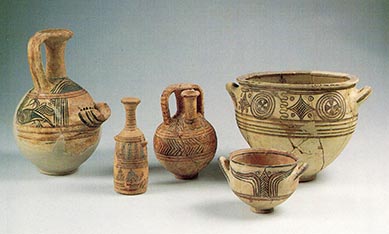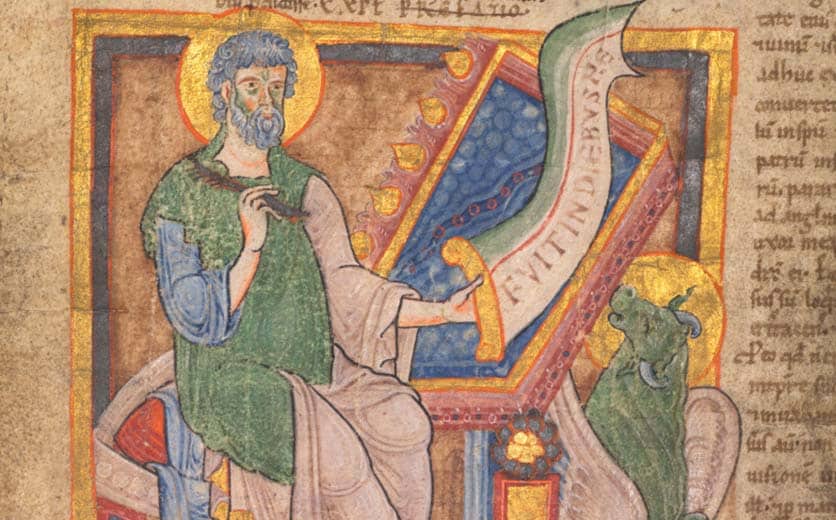In the first millennium BCE, the city-states of Arwad (in modern Syria) as well as Byblos, Sidon, and Tyre (in Lebanon) each had their own royal dynasties, trade networks, and other infrastructure. These city-states sometimes competed with one another economically, militarily, and diplomatically. But they shared some traditions and practices as well: they all wrote in a Semitic language we call Phoenician, used similar pottery types and styles, and worshipped a similar pantheon of gods and goddesses. Archaeologically speaking, these distinct regional states and dependent territories look homogeneous, thereby leading generations of scholars to talk about coastal Syria, Lebanon, and Northern Israel / Palestine collectively as “Phoenicia,” even though this is a Greek term that few would have identified with until the Roman period.
Were the Phoenicians Canaanites?
The Hebrew Bible never uses the term “Phoenicia.” Instead, biblical texts refer to specific cities (such as Sidon and Tyre) or use the term “Canaanite” for the inhabitants of places associated with Phoenician culture. (The term “Canaanite” is also sometimes used for sites within biblical Israel or associated with Philistine culture.) It is clear that in many places in the Hebrew Bible, the term “Canaanite” is used imprecisely to refer to polytheistic inhabitants of the Levant who are perceived to be a threat to monotheistic Israel in one way or another—in other words, it is more a rhetorical characterization than a specific ethnic group. Today, the term “Canaanite” is used by many archaeologists and historians to refer to inhabitants of the Bronze Age Levant all along the coast who spoke dialects of Northwest Semitic (from which both Hebrew and Phoenician are descended).
Excavations throughout the Levant have shown that there is significant continuity of habitation and material culture between the Late Bronze Age and Iron Age cities associated with Phoenicians. Sites further south along the coast show evidence of destruction or disruption ca. 1200 BCE that could indicate migration or other demographic changes at the end of the Bronze Age. There are also significant similarities between the Late Bronze Age Syrian language of Ugaritic, written in a uniquely adapted cuneiform abjad (an alphabet with no vowels), and the Iron Age Phoenician language, written in an innovative linear abjad. Some scholars, therefore, argue that it is useful to talk about the Phoenicians as the descendants of Canaanites, who had long been indigenous to the region. If traditional interpretations of Augustine’s writings are correct, the term “Canaanite” may have been taken up in later periods by some in Phoenician diaspora communities (what would come to be called Punic culture), to talk about their identity. Like many terms, “Canaan” or “Canaanite” might have originated as a reference to a specific place, become a kind of slur used by outsiders in lumping many different people together, and finally been co-opted by some of those people to proudly identify their cultural roots.
Were the Phoenicians enemies or allies of the Israelites?
It seems likely that since the Phoenician kingdoms were successful sea- and land-based traders with significant naval power, they were both valuable neighbors and direct competitors to the Israelite states. For example, one Phoenician inscription on the sarcophagus of King Eshmunazar II of Sidon (sixth– fifth century BCE) celebrates the Persian king’s gift of the city of Dor (formerly Israelite territory) to Sidon. Within the Hebrew Bible, the Phoenicians’ polytheistic belief systems had long been the norm throughout the Levant, and so they became easy scapegoats for monotheistic priests and writers trying to distinguish Israel and its unique relationship with Yahweh from the religious world of its neighbors. Several prophetic texts about the Phoenician kingdoms describe their wealth and access to resources in great detail, only to warn that none of this success matters without trust in Yahweh.
Since the Phoenician kingdoms sought their own allegiances and negotiations, specific kings, queens, or city-states ended up both as enemies and allies of the biblical Israelites at different times. In the tenth century BCE, King Hiram of Tyre is famously presented as a close ally first of David (2Sam 5:11, 1Kgs 5:1, 1Chr 14:1) and then of Solomon (1Kgs 9:11), who reportedly helped the latter build the temple to Yahweh in Jerusalem. But Ezek 26-28 criticizes Tyre and moralizes its destruction through a religious lens. In the ninth century BCE, the notorious Queen Jezebel of Sidon was married to King Ahab of Samaria, after which she was blamed for introducing the worship of Baal, although she apparently gave all her children names honoring Yahweh. Whether Tyrians, Sidonians, and other inhabitants of the northern coastal Levant were seen as friends or foes to the Israelites seems to depend on the historical moment and viewpoint of each biblical author or editor.





